Published on
By: Samantha Kummerer | Bond LSC
It’s no secret that the 21st century continues to set records with the warmest years in earth’s history and rising carbon dioxide and sea levels. These significant changes threaten the planet’s future and already challenge farmers.
Mannie Liscum, a Bond LSC investigator, said research in his lab may help address these problems.
They accidentally came across a variation of a plant that reveals multiple adaptive traits, including early flowering
“A variant that flowers early and has other advantageous traits could be very useful because that variant could be grown in more northern latitudes where the day length is shorter than in Missouri, but temperatures are rising to allow its optimal growth,” Liscum explained of the possible implications of the mutant discovery.
Liscum is referencing a shift in temperatures across the world due to climate change.
“We’re seeing broader swaths of the earth undergoing long periods of drought, so we’re getting less arable land, less agriculturally productive land, as we see temperatures rise,” explained Liscum.
These shifts are turning longstanding agriculture norms on their head. Northern U.S. areas are becoming more suitable for growing, while southern regions become less.
Plants designed and adapted to grow in a certain region over decades are suddenly becoming less suited for their region. If you suddenly have to grow corn at higher latitudes with less daylight, the timing of harvest is thrown off. This is because light and temperature affect when plants flower. A shift away from optimal growth regions will increase the time it takes to grow a crop.
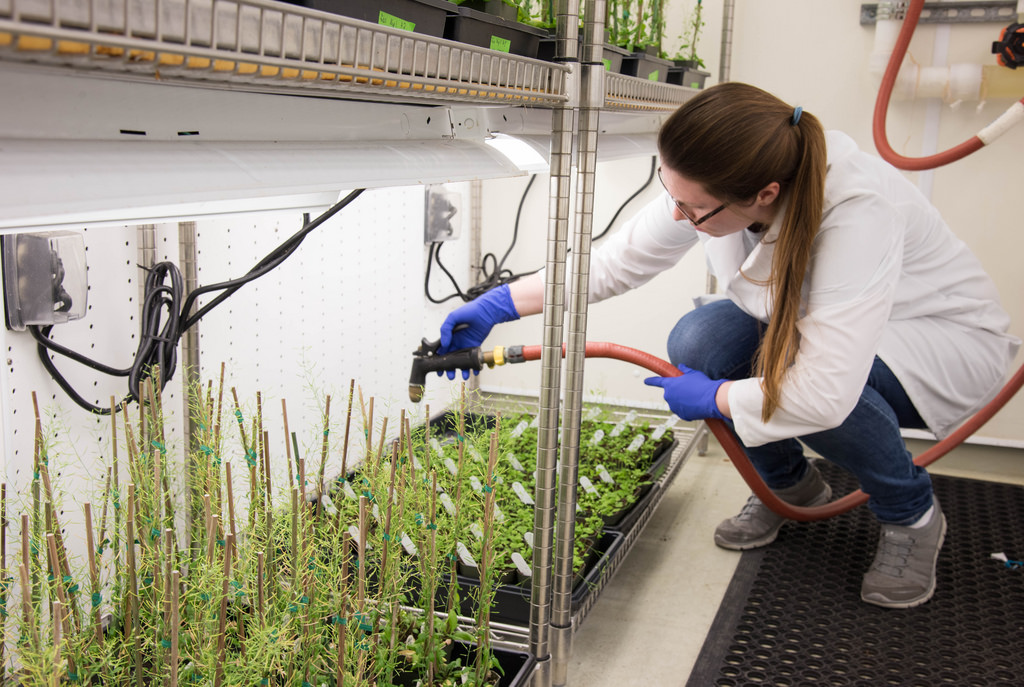
Katelynn Koskie, a PhD canidate, waters young Arabidopsis plants. Koskie studies what causes changes to a plant mutation called hph. | Photo by Samantha Kummerer, Bond LSC
The mutant Liscum’s lab discovered is also more tolerant to drought, produces more seeds, and has a larger biomass. These attributes could lead to increasing crop and biofuel production.
“Any one of those traits, if it actually translates into a crop could be a really big deal,” Liscum said.
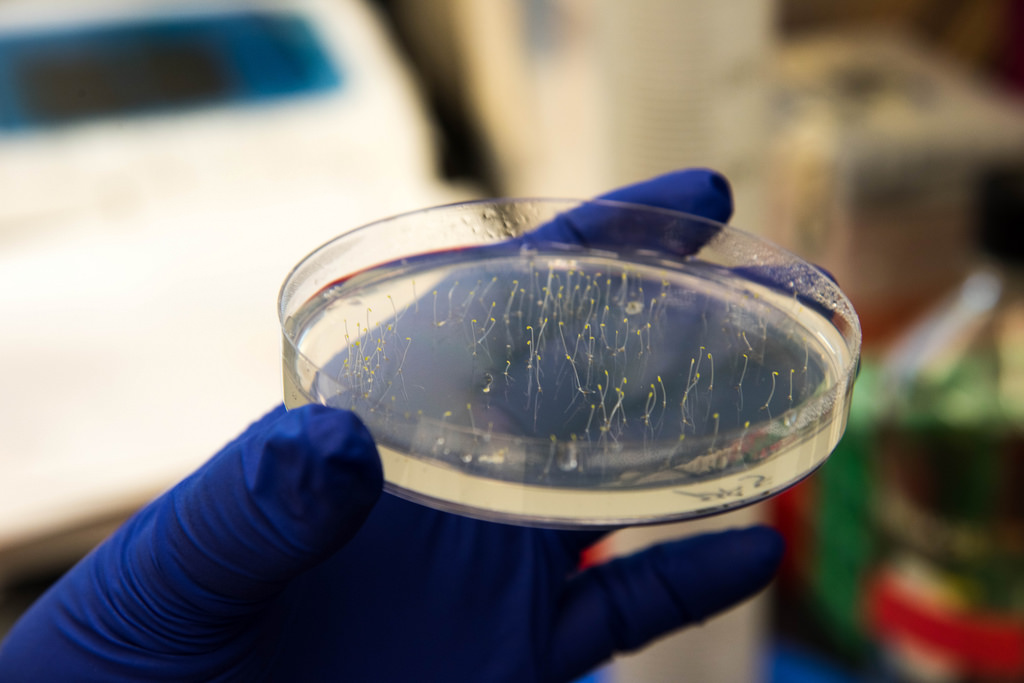
PhD student Johanna Morrow holds up a dish of three-day-old genetically modfied Arabidopsis seedlings. Morrow studies how Arabidopsis responds to light. | Photo by Samantha Kummerer, Bond LSC
How is a plant like this possible?
Researchers are still trying to determine the precise mechanism.
They found this mutation in a model plant, Arabidopsis . Arabidopsis is a simple weed that scientists use to test hypotheses due to its fast growth cycle and their extensive knowledge about its DNA.
Now, to determine if crop plants like corn or soybeans will behave similarly to Arabidopsis, researchers need to understand the mechanism behind these improved characteristics.
The science behind it
This mutation is called hph, hyper phototrophic hypocotyl. The mutation is connected with how plants perceive and interpret light cues.
“Just like we have photoreceptors in our eyes to interpret light cues, plants have different photoreceptors that can sense different qualities and intensities of light, so they can tell high energy or low energy light and that can direct their growth and development patterns,” explained Johanna Morrow, a member of Liscum’s lab.
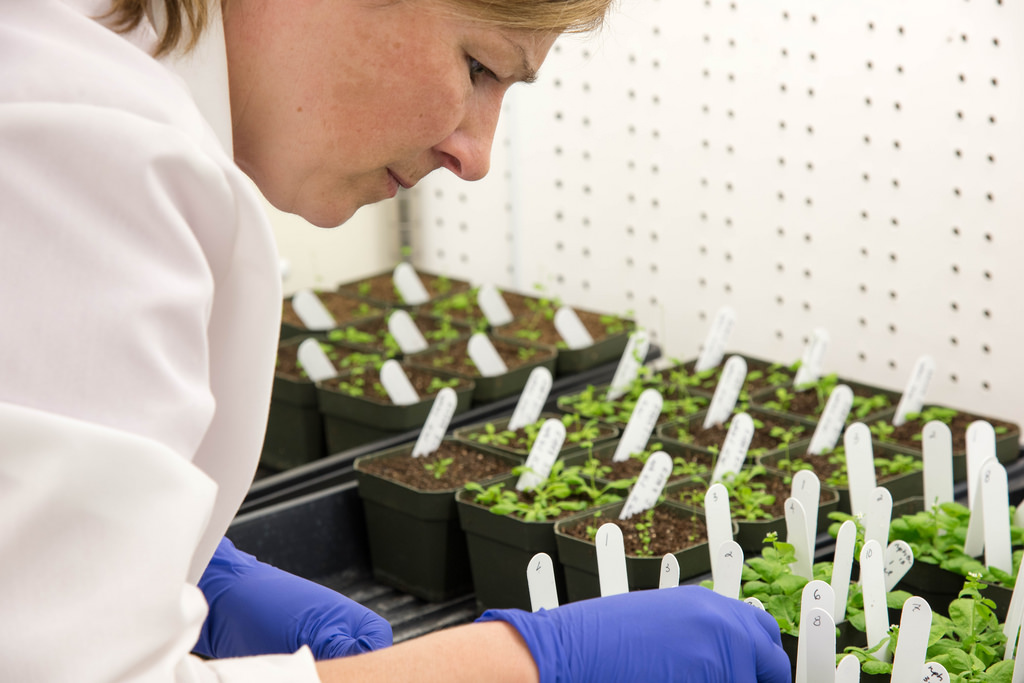
Johanna Morrow uses a tool to collect samples of leaf tissue. Morrow will use the DNA from the samples to genotype the plant. | Photo by Samantha Kummerer, Bond LSC.
In the model plant, these photoreceptors fall into several classes, one of which are the phototropins that are utilized to sense direction and intensity of blue light to optimize photosynthesis.
These phototropins play a big role in how a plant interprets light and how it develops. If they were altered or removed, it has a significant impact.
If you remove the phototropins from the genone the plant loses fitness. When grown in the field, one of the fitness consequences of a plant lacking phototropins is increased drought sensitivity. This results in mutants lacking phototropins making less biomass and seed,” Liscum elaborated.
Liscum explained the phototropin sees the light and initiates developmental functions, similar to how an eyeball sees something and then connects it to the brain that then tells your body to move.
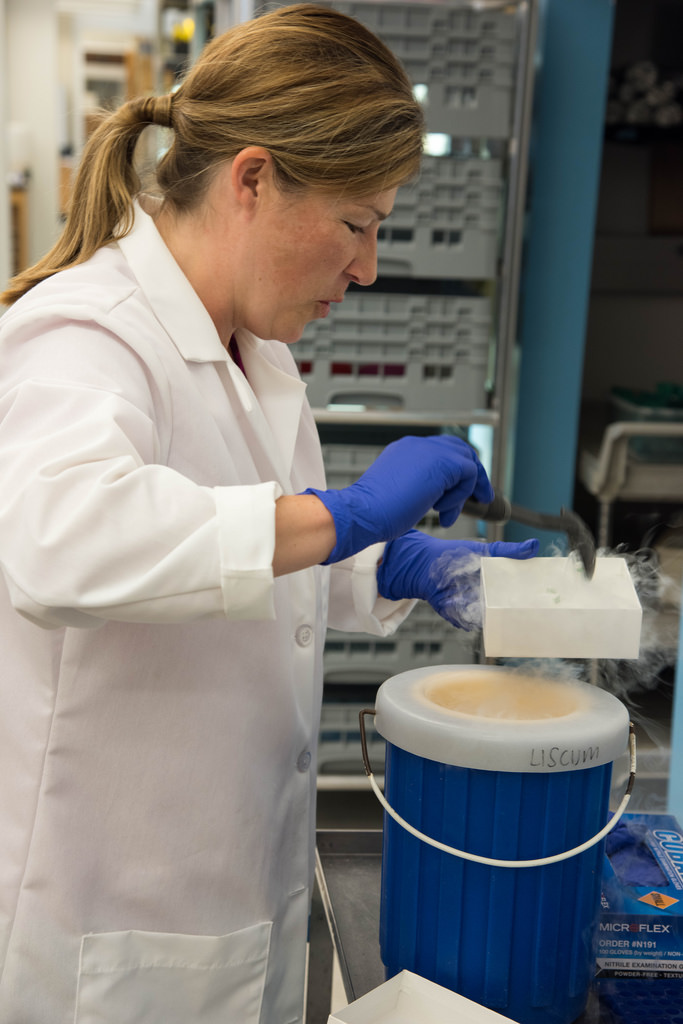
Johanna Morrow collects her samples of leaf tissues from liguid nitrogen so she can extract their DNA. Morrow gathered the samples from plants in the lab’s growth chamber. | Photo by Samantha Kummerer, Bond LSC
Some phototropin can still take in light or “see” but can’t pass the signal properly to the “brain.” Liscum says this is how the hph mutation affects phototropin – he calls it a ‘bad’ copy of the phototropin. Past experiments revealed plants with two bad copies developed worse while plants with two good copies developed better.
However, the best development came from a plant that had one copy of the bad and one copy of the good, as present in the hph mutant.
“When we found this mutation we expected this plant would be blind, functionally blind because it couldn’t interpret the perceived light signal,” Liscum said.
It turned out a plant with one copy of a broken phototropin and one normally functioning phototropin actually developed better than a plant with two functioning phototropin.
“You would expect if you have a bad copy and a good copy you would get worse, not better,” Liscum said.
The lab is still working to determine why the hph mutant does better rather than worse, than a normal plant, but that doesn’t stop Liscum from envisioning the ways this mutant could help the industry.

Katelynn Koskie finishes planting a new batch of genetically modified seeds. Koskie hopes her experiment can be applied to advancing soybeans. | Photo by Samantha Kummerer, Bond LSC
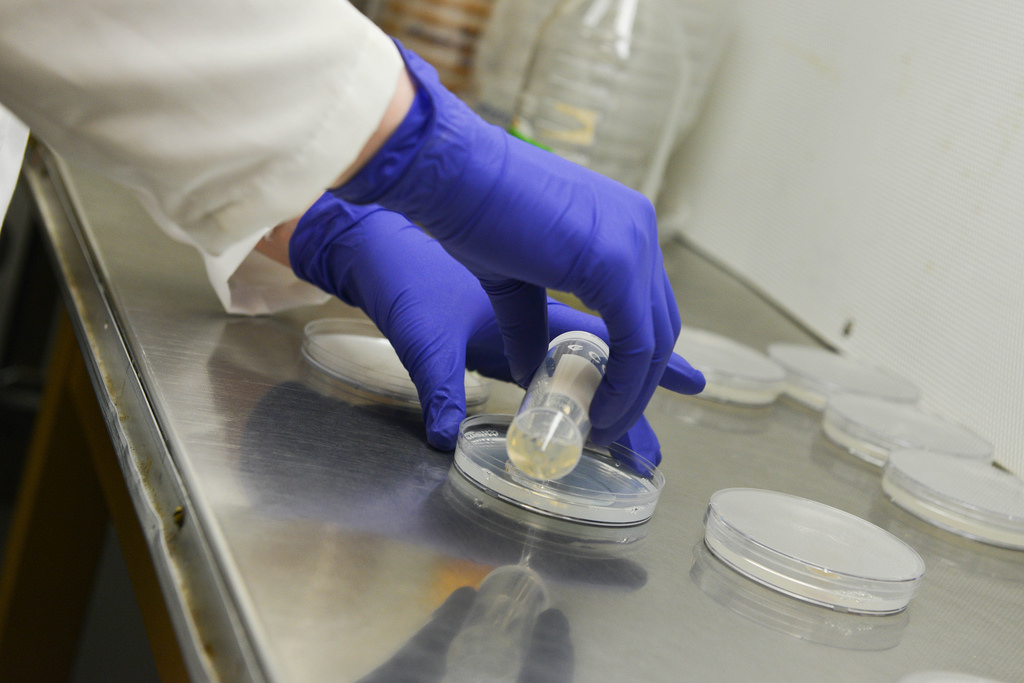
A member of Liscum’s lab, Katelynn Koskie, pours a jello-like substance into a dish to plant new plants. The substance allows the plants to stands in place by giving the roots something to grow in. | Photo by Samantha Kummerer, Bond LSC
Considering the potential effect on the genetically modified plant industry, Liscum explained this method would not have any negative side effects to humans because the modification is already naturally found in the plant.
“This would be literally putting a gene that’s normally present in a plant back into the plant but putting a copy in that, on its own, isn’t functional, so it’s not like you’re creating a monster. You’re putting a piece of DNA in that’s normally there but, only you’re using a dysfunctional version in of what’s normally there,” Liscum said.
The hopes are high for the agronomic impacts, but the transfer of the mutant to crop plants won’t be simple.
Katelynn Koskie, a PhD candidate, who is working on applying hph to soybeans, explained soybeans are more complex than the model plant because they have more phototropins.
While more complex, it is not impossible and the team is hopeful.
Experiments begin soon on soybeans and corn and Liscum said he hopes the lab will have answers in the next year.
Mannie Liscum is a professor in Biological Sciences at the University of Missouri. He is also a member of MU’s Interdisciplinary Plant Group that explores new ideas in plant biology. His lab in the Bond LSC studies plants’ response to light on multiple levels and the potential agronomic impact.